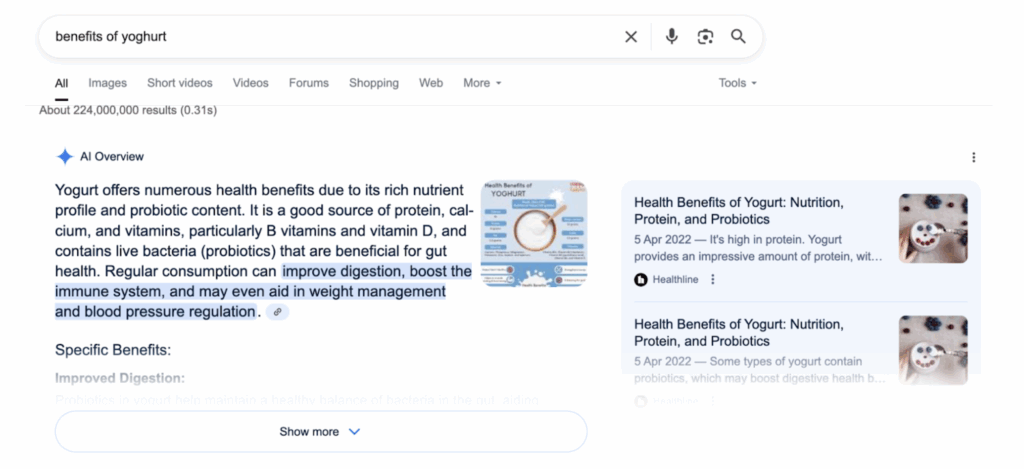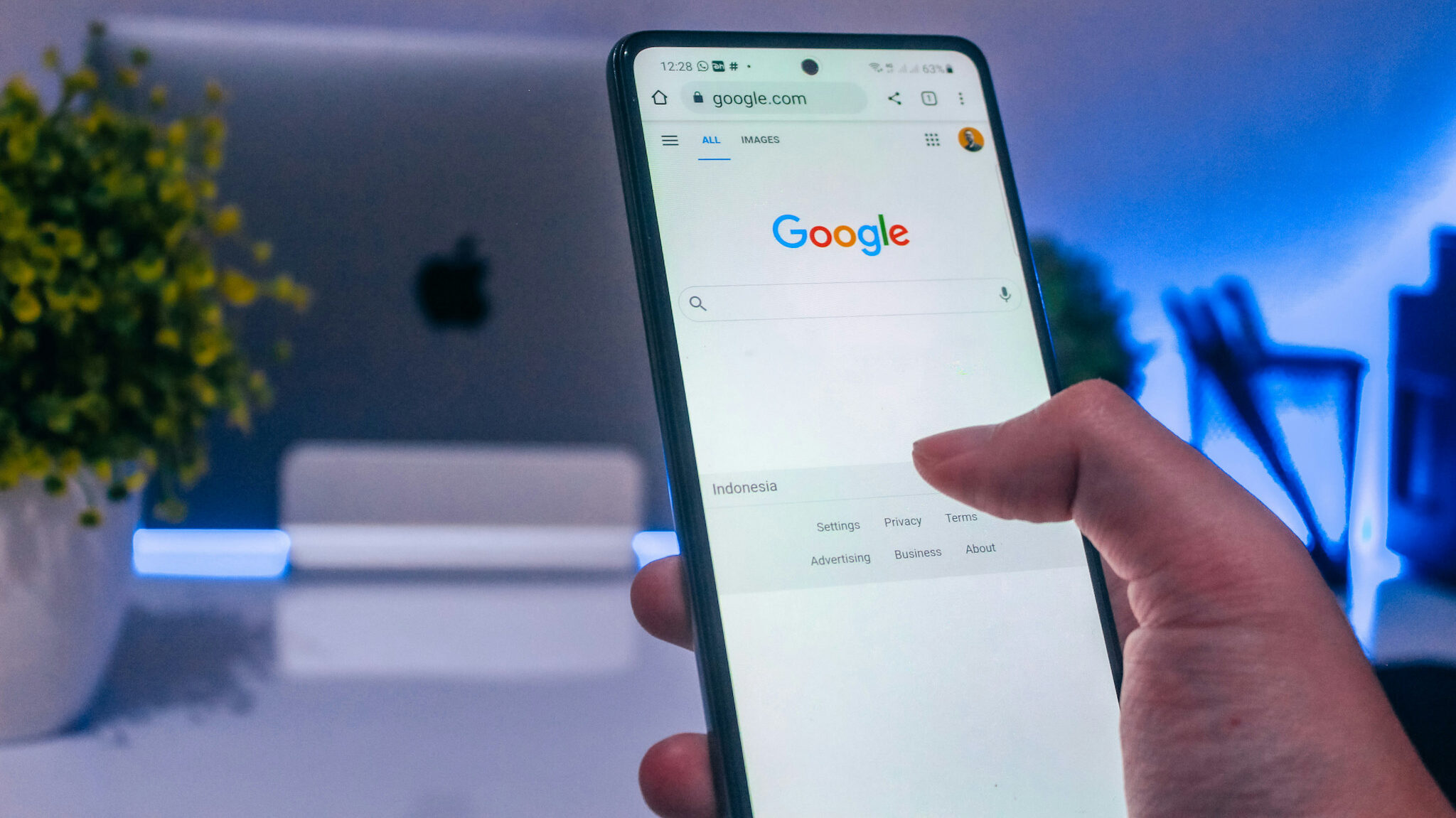More searches than ever are ending without a click. Between Google’s AI Overviews, featured snippets, and other on-SERP features, your audience might get answers before they even visit your site. But that doesn’t mean SEO is dead. Here’s how to adapt your SEO strategy to still get value, even when the click doesn’t come.
How Zero-Click Search Is Changing SEO
Remember when ranking on page one meant you could count on clicks? Those days are changing fast.
Today, over half of Google searches end without a click or website visit, according to a report by Rand Fishkin. Google is increasingly giving users instant answers via:
- Featured Snippets
- AI Overviews
- Knowledge Panels
- People Also Ask
- Direct Answer Boxes

This is known as Zero-Click Search, and it’s now the norm, not the exception. This behaviour has exploded with the rise of mobile search and Generative AI. And it’s changing how we measure the success of our content.
So what does this mean for your SEO strategy? It’s time to stop measuring success only in clicks and start thinking more holistically about visibility, branding, and user journeys.
Why Zero-Click SEO Still Matters
You might think, “What’s the point of ranking if no one clicks?” But ranking in zero-click formats still provides huge value:
- Brand Visibility: Even if users don’t click, they see your brand. This increases brand authority and top-of-mind awareness.
- Authority & Trust: Beyond increasing authority in the minds of users, getting featured also means that Search engine bots consider your content to be of high quality, thus sending more positive signals that can improve your overall SEO.
- Voice Search & AI Discovery: These trending tools pull from zero-click content sources, meaning more exposure, more brand visibility, and exposure to a wider audience.
- Down-Funnel Impact: Users might not click now, but they remember you later. While you don’t get the instant gratification of a click straight away, you will still reap these benefits in the long run. You might have noticed in your analytics that while you aren’t getting as many clicks to your site nowadays, your SEO revenue has increased.
It’s not about instant conversions. It’s about playing the long game of brand trust and discoverability.

Over half of Google searches end without a click, resulting in a lower click-through-rate.
How to Still Drive Value from Zero-Click Search
We’ve said it before, and we’ll say it again: SEO isn’t dead. You can still drive value from zero-click search, but you’ll need to adapt your content strategy. Here’s how to adapt your content strategy for a zero-click world:
1. Target Featured Snippets Intentionally
To maximise your chances of being selected in featured snippets, you can write your content to answer questions clearly and concisely. For example, search engines love it when you:
- Use H2s and H3s with direct question phrasing.
- Write a 40–60 word answer immediately after.
- Use numbered or bulleted lists where appropriate.
For example:
H3: “What food pairs well with Pinot Noir?”
→ “Pinot Noir is so popular because of its incredible food-pairing versatility. Its light body and balanced acidity make it a natural match for dishes that might overpower or be overpowered by other reds. Try pairing Pinot Noir with roast chicken or duck, mushroom risotto or creamy pasta, grilled salmon or tuna, or soft cheeses like brie or camembert. Its bright acidity and earthy undertones also complement vegetarian dishes, such as lentil stews or roasted root vegetables.” – Our client thewinecollective.com.au
2. Use Schema Markup (Structured Data)
Structured data might look like a bunch of coding jargon at first, but they do make a difference when it comes to appearing in Google’s rich results. Why? Using schema markup helps search engines understand your content and qualify for rich results.
- FAQ schema
- How-to schema
- Product and review schema
- Organisation/author markup for E-E-A-T
While optimising structured data won’t guarantee a snippet or panel placement, it dramatically improves your chances.
3. Build Topical Authority, Not Just Page Authority
Following the trend of recent years, Google is increasingly rewarding whole-site authority, as opposed to just Page Authority. That means that you should include these tactics in your content strategy:
- Create multiple pieces of content around a topic (content clusters)
- Interlink them smartly via an internal linking strategy
- Ensure high factual accuracy and source citations (E-E-A-T)
When Google trusts your domain on a topic, it’s more likely to feature your answers in AI Overviews and other zero-click spots.
4. Optimise for Brand Impressions, Not Just Clicks
In this Zero Click world, we need to change the way we look at metrics and stop glorifying clicks over impressions. This drastic change in the way that people search will require you to update your KPIs. Instead of tracking Clicks as your sole measure of success, start tracking:
- Impressions (via Google Search Console)
- Featured Snippet appearances
- On-page engagement if users do click (e.g. time on page, scroll depth, conversion rate)
- Brand search volume (are people Googling you more often?)
Remember: The real win is when someone sees your content on a zero-click SERP, then follows you on Instagram or comes back later for your newsletter or services.
5. Create a Post-Click Ecosystem
This is perhaps the biggest change you need to apply to your whole content strategy. Now that clicks are rare, you need to ensure you make every click count. How? Make sure that if people do click, you don’t waste the opportunity to:
- Leave a strong impression with your brand. Use strong branding and trust signals immediately. The goal is for users to remember your brand, Google you later, find you on socials, spread word-of-mouth (in-person or digital) as they recommend your brand to their peers, and continue interacting with your brand long after their click.
- Capture their email address. This could be through a lead magnet, downloadable assets (freebies, PDF guides, videos), or a newsletter sign-up form with a strong call-to-action. For example, if your travel site appears in featured snippets for “things to do in Melbourne”, why not offer a downloadable “10 Hidden Spots You’ll Love in Melbourne” PDF in exchange for their email?
- Make the experience mobile-friendly and fast. While content strategy is the main topic here, don’t forget about Technical SEO and the overall usability of your website (especially your mobile site). Since users might not go on your website as often as they used to, making sure it’s a fast, responsive, enjoyable experience is a must.
This is where your zero-click visibility turns into real business value.

Conclusion: Adapt or Miss Out
Zero-click search isn’t a problem – it’s a signal that the SEO landscape is evolving (not dying). If you’re stuck in the mindset that traffic = value, you’re missing the bigger picture. In today’s search world, visibility, authority, and trust are the new currency.
Optimise your content for where people are—and that increasingly means right on the SERP.
Want help crafting content that ranks and builds trust in a zero-click world? Get in touch with our expert SEO team now and let’s get started.


